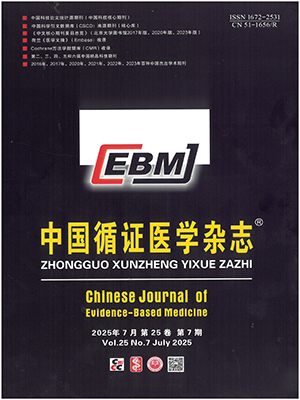| 1. |
Schober P, Vetter TR. Repeated measures designs and analysis of longitudinal data: if at first you do not succeed-try, try again. Anesth Analg, 2018, 127(2): 569-575.
|
| 2. |
Coelho T, Marques W, Dasgupta NR, et al. Eplontersen for hereditary transthyretin amyloidosis with polyneuropathy. JAMA, 2023, 330(15): 1448-1458.
|
| 3. |
Heerspink HJL, Radhakrishnan J, Alpers CE, et al. Sparsentan in patients with IgA nephropathy: a prespecified interim analysis from a randomised, double-blind, active-controlled clinical trial. Lancet, 2023, 401(10388): 1584-1594.
|
| 4. |
Moosmayer S, Ekeberg OM, Hallgren HB, et al. Ultrasound guided lavage with corticosteroid injection versus sham lavage with and without corticosteroid injection for calcific tendinopathy of shoulder: randomised double blinded multi-arm study. BMJ, 2023, 383: e076447.
|
| 5. |
Beck RW, Riddlesworth T, Ruedy K, et al. Effect of continuous glucose monitoring on glycemic control in adults with type 1 diabetes using insulin injections: the DIAMOND randomized clinical trial. JAMA, 2017, 317(4): 371-378.
|
| 6. |
Langdahl BL, Libanati C, Crittenden DB, et al. Romosozumab (sclerostin monoclonal antibody) versus teriparatide in postmenopausal women with osteoporosis transitioning from oral bisphosphonate therapy: a randomised, open-label, phase 3 trial. Lancet, 2017, 390(10102): 1585-1594.
|
| 7. |
Guo Y, Logan HL, Glueck DH, et al. Selecting a sample size for studies with repeated measures. BMC Med Res Methodol, 2013, 13: 100.
|
| 8. |
Rutterford C, Taljaard M, Dixon S, et al. Reporting and methodological quality of sample size calculations in cluster randomized trials could be improved: a review. J Clin Epidemiol, 2015, 68(6): 716-723.
|
| 9. |
Bhaumik DK, Roy A, Aryal S, et al. Sample size determination for studies with repeated continuous outcomes. Psychiatr Ann, 2008, 38(12): 765-771.
|
| 10. |
Nordgren R. Calculating a sample size for a study with repeated measures. J Mol Cell Cardiol, 2019, 133: 217-219.
|
| 11. |
Ren Y, Jia Y, Yang M, et al. Sample size calculations for randomized controlled trials with repeatedly measured continuous variables as primary outcomes need improvements: a cross-sectional study. J Clin Epidemiol, 2024, 166: 111235.
|
| 12. |
Muller KE, Lavange LM, Ramey SL, et al. Power calculations for general linear multivariate models including repeated measures applications. J Am Stat Assoc, 1992, 87(420): 1209-1226.
|
| 13. |
Walters SJ, Jacques RM, Dos Anjos Henriques-Cadby IB, et al. Sample size estimation for randomised controlled trials with repeated assessment of patient-reported outcomes: what correlation between baseline and follow-up outcomes should we assume. Trials, 2019, 20(1): 566.
|
| 14. |
Murphy JI, Weaver NE, Hendricks AE. Accessible analysis of longitudinal data with linear mixed effects models. Dis Model Mech, 2022, 15(5): dmm048025.
|
| 15. |
高萌, 张强, 邓红, 等. 方差分析和混合线性模型在重复测量数据中的应用探讨. 现代预防医学, 2008, 35(7): 1221-1223.
|
| 16. |
向艳平. 医学期刊中重复测量方差分析的误用. 湖北科技学院学报, 2020, 40(6): 149-154.
|
| 17. |
Yu Z, Guindani M, Grieco SF, et al. Beyond t test and ANOVA: applications of mixed-effects models for more rigorous statistical analysis in neuroscience research. Neuron, 2022, 110(1): 21-35.
|
| 18. |
Pandis N, Polychronopoulou A, Eliades T. Sample size estimation: an overview with applications to orthodontic clinical trial designs. Am J Orthod Dentofacial Orthop, 2011, 140(4): e141-e146.
|
| 19. |
de Melo MB, Daldegan-Bueno D, Menezes Oliveira MG, et al. Beyond ANOVA and MANOVA for repeated measures: advantages of generalized estimated equations and generalized linear mixed models and its use in neuroscience research. Eur J Neurosci, 2022, 56(12): 6089-6098.
|
| 20. |
D'Arrigo G, Roumeliotis S, Torino C, et al. Sample size calculation of clinical trials in geriatric medicine. Aging Clin Exp Res, 2021, 33(5): 1209-1212.
|
| 21. |
李婵娟, 蒋志伟, 王锐, 等. 随机对照药物临床试验样本量估计. 中国临床药理学与治疗学, 2011, 16(10): 1132-1136.
|
| 22. |
Morgan TM, Case LD. Conservative sample size determination for repeated measures analysis of covariance. Ann Biom Biostat, 2013, 1(1): 1002.
|
| 23. |
Machin D, Campbell M, SB T, et al. Sample sizes for clinical. Laboratory and Epidemiology Studies, 2018.
|
| 24. |
Hayat MJ, Hedlin H. Modern statistical modeling approaches for analyzing repeated-measures data. Nurs Res, 2012, 61(3): 188-194.
|
| 25. |
Armstrong RA. Recommendations for analysis of repeated-measures designs: testing and correcting for sphericity and use of manova and mixed model analysis. Ophthalmic Physiol Opt, 2017, 37(5): 585-593.
|




